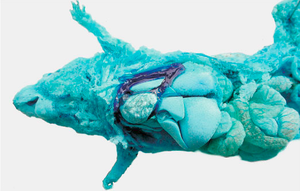Studienarbeiten
Anatomical Investigation of Kidney Vasculature through Corrosion Casting and Micro-CT Analysis
This project is motivated by the lack of information on the complex structure of the kidney vasculature. Current research at the Institute of Physiology is concentrated on the oxygenation of the kidney, which is tightly associated with the vasculature structure. We are working on the computational modeling of oxygen transport through the kidney in order to better understand the regulatory mechanisms that control the kidney oxygenation. This would help in comprehending the ways in which kidneys protect themselves from hypoxia and the conditions, which lead to tissue hypoxia in kidneys.
In the proposed project, the student will perform corrosion casting on kidneys of mice or rats by replacing the blood volume with a low viscosity resin and removing the surrounding tissue in order to replicate the vascular architecture. This will be performed with the help of an experienced technician from the Institute of Anatomy. An exemplary end-result of mouse corrosion casting performed in the Institute of Anatomy is shown in Figure 1 [1]. Thereafter the obtained specimens will be analyzed by micro-computed tomography (micro-CT). Initial analysis will be performed with the conventional micro-CT device available at the Institute. Further analysis with higher resolution could be performed with the synchrotron radiation-based micro computed tomography (SRμCT) in Paul Scherrer Institute (PSI) in Switzerland. An exemplary reconstruction of 20 μm resolution micro-CT data from the arterial and venous trees is shown in Figure 2 [2]. However 20 μm resolution is not sufficient for capturing structural details at the capillary level [2]. The main purpose of the proposed project is to analyze the vasculature structure down to the capillary level and determine spatial associations between the peritubular capillary network and preglomerular vasculature. The current technology that will be used in the proposed project allows for such a resolution (≈1 μm for both the corrosion casting and SRμCT [1]).
References
1. T. Krucker et al., Microsc Res Techniq 69, 138-47 (2006)
2. D. A. Nordsletten et al., Am J Physiol-Heart C. 291, H296-H309 (2006)
Information
(position closed)
For further information, please contact
Prof. Vartan Kurtcuoglu
Dr. Ufuk Olgac

